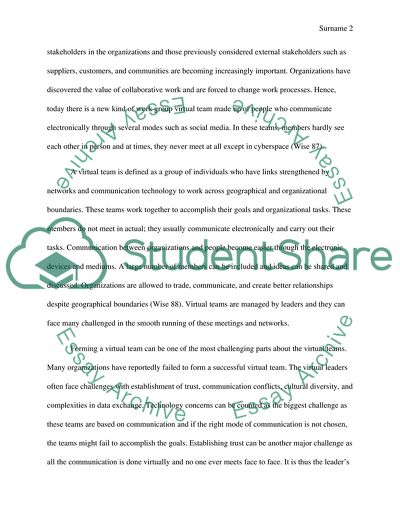Cite this document
(Virtual and Collaborative Teams Organization Assignment Example | Topics and Well Written Essays - 2250 words, n.d.)
Virtual and Collaborative Teams Organization Assignment Example | Topics and Well Written Essays - 2250 words. https://studentshare.org/information-technology/1859039-virtual-teams
Virtual and Collaborative Teams Organization Assignment Example | Topics and Well Written Essays - 2250 words. https://studentshare.org/information-technology/1859039-virtual-teams
(Virtual and Collaborative Teams Organization Assignment Example | Topics and Well Written Essays - 2250 Words)
Virtual and Collaborative Teams Organization Assignment Example | Topics and Well Written Essays - 2250 Words. https://studentshare.org/information-technology/1859039-virtual-teams.
Virtual and Collaborative Teams Organization Assignment Example | Topics and Well Written Essays - 2250 Words. https://studentshare.org/information-technology/1859039-virtual-teams.
“Virtual and Collaborative Teams Organization Assignment Example | Topics and Well Written Essays - 2250 Words”. https://studentshare.org/information-technology/1859039-virtual-teams.


